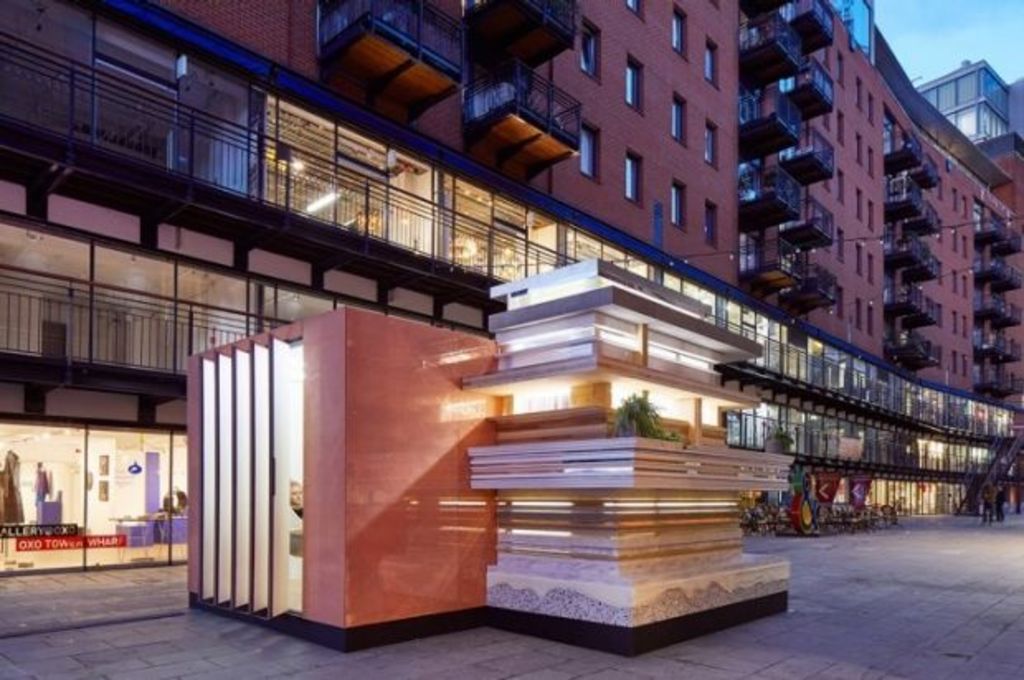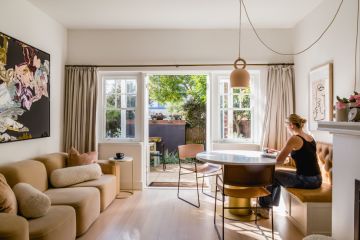Open house takes on whole new meaning in London's sharing economy

First cars went communal, and bikes were open to all. Then private offices became co-working spaces, and spare rooms morphed into mini hotels as London’s sharing economy took off.
Now, asks architect Sam Jacob, is Britain ready to break down the ultimate barrier and give up a deep-seated dream of an Englishman’s home as his castle?
For this month’s London Design Festival, Jacob has built a prototype micro-house – half-shed, half-library – and says London should look to a future of home-sharing.
“Architecture is about relationships,” said Jacob, who rose to fame as part of radical architecture collective called FAT, best known for playful designs, including a wiggly-walled BBC production village in Cardiff.
“We often confuse it with physical structures or investments, but really, if we are thinking about housing, we are thinking about the collective way that we all inhabit the same territory,” Jacob, 47, told the Thomson Reuters Foundation.
His vision for the future is an open home, conceived without a locked front door or gated fence, the hard barriers that traditionally separate city neighbours.
His ‘Urban Cabin’, built from reflective copper and stacked planks of wood and plastic, has a kitchen made to serve multiple families and a micro-library, where visitors to the festival can swap a book of their own for one of Jacob’s.
In an interview inside the cabin on London’s South Bank, he said the home is not a direct answer to the housing crisis in the capital, where the average home costs more than 10 times the median salary.
- Related: Work in a bank, sleep in a bunk
- Related: Co-living apartment buildings taking off
- Related: Tiny house opens at Federation Square
Instead, he proposed a new model, given that existing properties – Victorian townhouses, 20th century suburban detached homes, and 21st century luxury apartments – are increasingly out of the reach of most Londoners.
“There are new ways of living that are not about trying to stick a 21st-century person into the shell of a building from the 1900s,” said Jacob.
“Perhaps there are other models and [the crisis] is not just a failure of economics but a failure of our imaginations.”
No Front Door?
The project, part of a series of “Mini Living” designs for car manufacturer Mini, aims to hint at a new type of future without walls between private and public space.
Jacob said he is drawing on history, when homes were not always built with the same strict divide between private bedrooms, social living rooms, and public places outside.
For example, in the 16th century, the bedroom didn’t exist – Elizabethans slept wherever they took their bed, he said.
“Perhaps these ideas which seem so outlandish to us could actually help us understand the future of living in a city like London,” he said.
Britain’s restrictive planning rules, along with steadily rising demand for property, and years of rampant speculation, has kept the housing market on a tear for the past two decades.
In the past 10 years, property prices have risen by more than 90 per cent as the city has failed to meet house building targets year after year.
“One of the ideas at its heart is about sharing, or about how things can become perhaps more communal,” said Jacob, whose idea follows sharing initiatives such as London’s extensive cycle hire scheme, Uber car service, and Airbnb home rental app.
Less can mean more, he said, citing the shared book scheme in his mini house.
“The library’s role here is somewhere between the grand libraries, like the British Library, and the stack of books in a pile by the side of your bed.”
“In that ground between the incredibly intimate and the incredibly public, perhaps there is something else we could discover.”
This story was first published by The Thomas Reuters Foundation.
We recommend
We thought you might like
States
Capital Cities
Capital Cities - Rentals
Popular Areas
Allhomes
More







